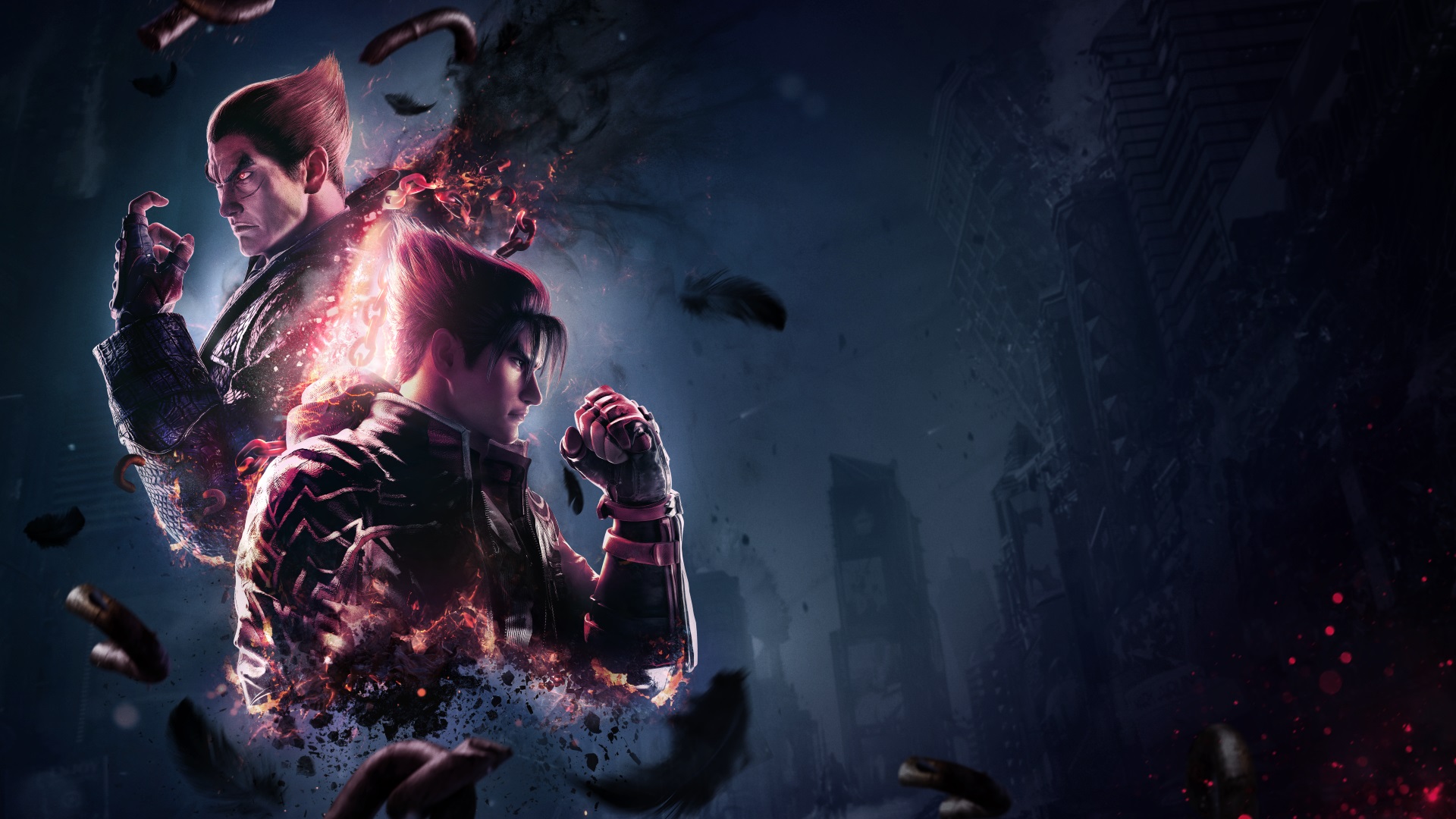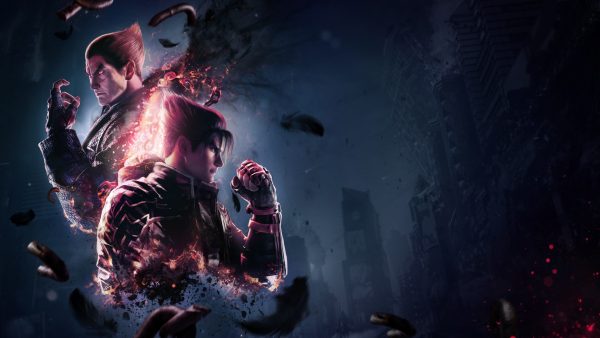The Heat System itself can be daunting to learn, especially for those playing Tekken for the first time. Even I had to come to grips with it after jumping into Tekken 8 on release day, despite having been playing Tekken since Tekken 2.
But fear not, I’m here to tell you what’s what about this new mechanic. Welcome back to our Tekken 8 Beginner Series!
What is Heat in Tekken 8?
Heat is a finite resource granted to both characters at the start of every round. This resource is represented by a blue gauge underneath each character’s health gauge. The gauge itself stays full until a character enters the Heat state, which is a powered-up state that unlocks access to Heat-exclusive moves and attack properties.
In addition, a character in the Heat state gains chip damage on all of their striking moves, and their moves recover more chip damage than they normally would outside of Heat.
How to Activate Heat in Tekken 8
There are two distinct methods of activating Heat: Heat Engagers and Heat Bursts.
Heat Engager
Every character in the game has at least a few moves that also act as Heat Engagers. Upon landing such an attack, a special slow-mo animation plays out for a second or two, and the character that landed the Heat Engager enters the Heat state with a full gauge. The latter point separates it from Heat Bursts, which allow a character to enter Heat but with a reduced gauge.
Additionally, Heat Engagers give massive frame advantage at +17 on hit, while the opponent on the receiving end of the Heat Engager is forced to block until the whole animation is over. Upon landing succesfully, Heat Engagers also grant your character a sizable chunk of their health back, assuming they have gray health left over from taking chip damage.
Generally, a character’s Heat Engagers and their individual properties (power crush, fast high poke, homing move, etc.) will dictate a large part of that character’s playstyle and gameplan. Victor’s Failnaught (b+1+2) for example is a high power crushing Heat Engager, that also happens to be safe on block. This means that it is quite easy to just throw it out whenever during a round in order to enter Heat.
Heat Burst
Heat Bursts are the “manual” method of entering Heat. In contrast to Heat Engagers, Heat Bursts are entirely universal and aren’t bound to a character’s moves at all. Done by pressing 2+3, Heat Bursts execute a 16-frame armored mid attack that also tracks quite well to both sides. Heat Bursts are always either +1 on block or +2 on hit.
Before a Heat Burst becomes active and able to hit the opponent, though, there is a short time freeze that takes place where neither player can act. Regardless of whether or not the opponent blocks it or it whiffs, using your Heat Burst will always end up in you going into Heat.
Heat Bursts are also used to start or extend juggle combos, as they cause a pseudo-bound state when hitting airborne opponents. Note that this does not consume your tornado during a juggle combo, so it’s possible to get some really good mileage out of using Heat Bursts for wall carry and extra combo damage.
Be careful using Heat Bursts out in the open, however, as they are very punishable on whiff. You can mitigate this somewhat by inputting b,b during the time freeze, to prevent your character from throwing out the mid strike. You will still be subject to some recovery frames this way, but it does keep your character from extending their hurtbox and giving your opponent room to whiff punish you.
How to Spend Heat in Tekken 8
Once you’re in Heat, there are several ways for your character to spend their gauge.
New/Enhanced Moves
Every character gains access to entirely new attacks or enhanced versions of their existing moves when in Heat. For example, Kazuya’s Demon Paw (f,f+2) gains a laser extension on hit, which deals extra damage on top of the initial strike. Paul meanwhile gains guard break properties on his chargeable moves, such as Crushing Wind (b+2,1 held down).
Another example is Devil Jin’s Hisou (f+3+4), which he can choose to extend with a laser followup by pressing 1+2 right after. This makes the move completely safe on block due to pushback, so it can be used to force opponents to stand block — which opens them up to his Hell Sweep (cd 4,1+2).
But perhaps the most notorious example is Xiaoyu’s enhanced Hypnotist stance (HYP) in Heat. Normally, it takes longer for her to charge her moves out of this stance when outside of Heat, but her HYP moves charge up to full much faster during Heat. This makes her a mixup monster, especially at the wall.
Using Heat this way partially consumes Heat energy. The exact amount varies per character and per specific attack, so you’ll want to learn your character’s Heat expenditure depending on which moves you decide to throw out in Heat.
Heat Smash
Heat Smashes expend your entire Heat gauge, no matter how much you have remaining, to execute a powerful special attack that can have its own unique properties. Done by pressing 2+3 when in Heat, most Heat Smashes are mids that leave you plus on block afterwards or deal above average damage for a move that only has a single input involved.
For example, Jin’s Hellfire Trespass Slayer throws out a multi-hit string that deals a total of 57 damage on hit, and leaves him at +3 on block. This means that Jin can mix his opponent up somewhat if his Heat Smash is blocked, but is rewarded with huge damage if he manages to land it.
Some characters have access to low Heat Smashes. Reina has a fast low Heat Smash out of her Heaven’s Wrath stance, which goes hand in hand with her mid Heat Smash. This means that her opponents will have to guess which Heat Smash she opts for when she has Heat activated. However, Reina’s low Heat Smash is unsafe on block at -17 — which is a common theme across all such Heat Smashes.
Using a Heat Smash during a combo scales its damage severely. Doing so is not advisable unless you are sure it will win you the round.
Heat Dash
Done by using a Heat Engager with Heat already activated and while holding f as the move connects with your opponent, Heat Dashes consume your entire Heat gauge to cause a special knockdown state on hit. This knockdown state, while not a full launch, allows your character to follow up with a juggle combo afterwards — albeit with some pretty heavy damage scaling.
If blocked, Heat Dashes universally leave your character at +5 and right in your opponent’s face, thus creating a mixup situation. This is a huge commitment, though, since you lose all your Heat immediately after the Heat Dash.
Heat Dashes also make for great combo enders, with certain moves enjoying greatly reduced scaling right after a Heat Dash. For example, Devil Jin’s Heaven’s Door (cd 1,uf) will often deal more damage at the end of a Heat Dash combo than if you had just used it normally. This makes Heat Dashes perfect for squeezing out extra damage at the end of rounds, which will often be just enough to KO your opponent when you would have lacked the damage to do so otherwise.
Putting it All Together
How your character prefers to spend their Heat gauge depends on a lot of factors. Their individual offensive and defensive gameplans will often dictate which moves are best enhanced by Heat, when and how to go into Heat in the first place, and whether or not going all-in on a Heat Smash is even a good idea.
Thus, you’ll want to learn the pros and cons of your character’s unique Heat moves and properties to make the most out of your resources each round. Watching how the pros use their Heat is a great way to do this, so we’d recommend watching replays of pros that main your character. Individual character guides also work well in this regard.


